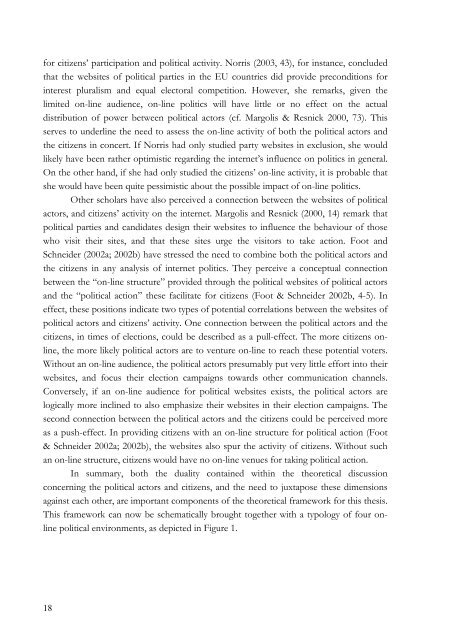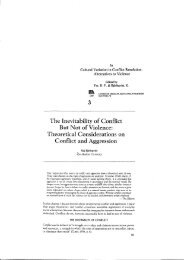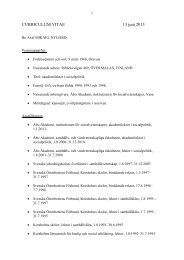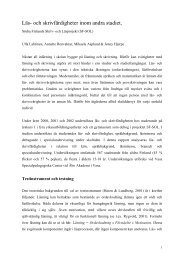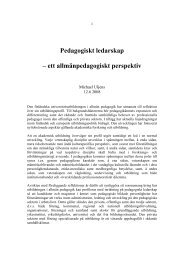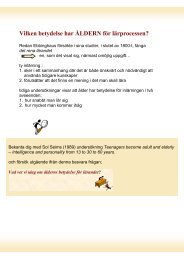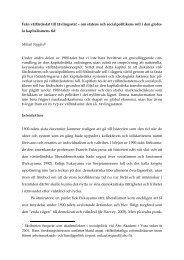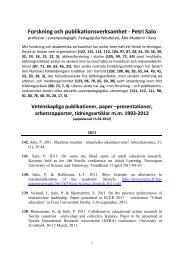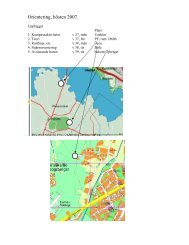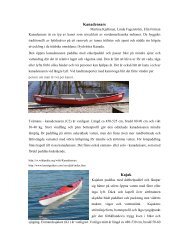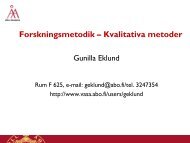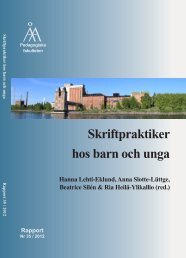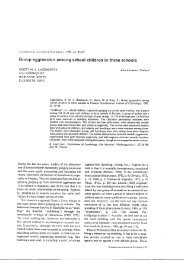Parties, Candidates and Citizens On-Line - Åbo Akademi
Parties, Candidates and Citizens On-Line - Åbo Akademi
Parties, Candidates and Citizens On-Line - Åbo Akademi
Create successful ePaper yourself
Turn your PDF publications into a flip-book with our unique Google optimized e-Paper software.
for citizens’ participation <strong>and</strong> political activity. Norris (2003, 43), for instance, concluded<br />
that the websites of political parties in the EU countries did provide preconditions for<br />
interest pluralism <strong>and</strong> equal electoral competition. However, she remarks, given the<br />
limited on-line audience, on-line politics will have little or no effect on the actual<br />
distribution of power between political actors (cf. Margolis & Resnick 2000, 73). This<br />
serves to underline the need to assess the on-line activity of both the political actors <strong>and</strong><br />
the citizens in concert. If Norris had only studied party websites in exclusion, she would<br />
likely have been rather optimistic regarding the internet’s influence on politics in general.<br />
<strong>On</strong> the other h<strong>and</strong>, if she had only studied the citizens’ on-line activity, it is probable that<br />
she would have been quite pessimistic about the possible impact of on-line politics.<br />
Other scholars have also perceived a connection between the websites of political<br />
actors, <strong>and</strong> citizens’ activity on the internet. Margolis <strong>and</strong> Resnick (2000, 14) remark that<br />
political parties <strong>and</strong> c<strong>and</strong>idates design their websites to influence the behaviour of those<br />
who visit their sites, <strong>and</strong> that these sites urge the visitors to take action. Foot <strong>and</strong><br />
Schneider (2002a; 2002b) have stressed the need to combine both the political actors <strong>and</strong><br />
the citizens in any analysis of internet politics. They perceive a conceptual connection<br />
between the “on-line structure” provided through the political websites of political actors<br />
<strong>and</strong> the “political action” these facilitate for citizens (Foot & Schneider 2002b, 4-5). In<br />
effect, these positions indicate two types of potential correlations between the websites of<br />
political actors <strong>and</strong> citizens’ activity. <strong>On</strong>e connection between the political actors <strong>and</strong> the<br />
citizens, in times of elections, could be described as a pull-effect. The more citizens online,<br />
the more likely political actors are to venture on-line to reach these potential voters.<br />
Without an on-line audience, the political actors presumably put very little effort into their<br />
websites, <strong>and</strong> focus their election campaigns towards other communication channels.<br />
Conversely, if an on-line audience for political websites exists, the political actors are<br />
logically more inclined to also emphasize their websites in their election campaigns. The<br />
second connection between the political actors <strong>and</strong> the citizens could be perceived more<br />
as a push-effect. In providing citizens with an on-line structure for political action (Foot<br />
& Schneider 2002a; 2002b), the websites also spur the activity of citizens. Without such<br />
an on-line structure, citizens would have no on-line venues for taking political action.<br />
In summary, both the duality contained within the theoretical discussion<br />
concerning the political actors <strong>and</strong> citizens, <strong>and</strong> the need to juxtapose these dimensions<br />
against each other, are important components of the theoretical framework for this thesis.<br />
This framework can now be schematically brought together with a typology of four online<br />
political environments, as depicted in Figure 1.<br />
18


